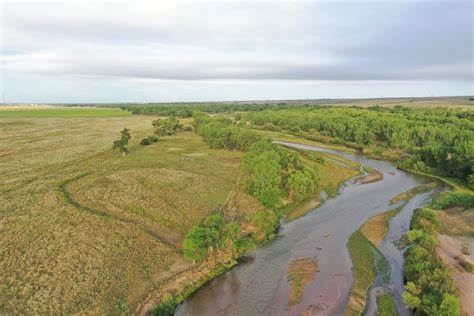An announcement last week in Lincoln, Nebraska raised the hackles of everyone involved in Colorado water. Nebraska Governor Pete Ricketts unveiled a $500 million plan to build canals in Colorado to divert water from the South Platte River into Nebraska, and to condemn private land in Colorado, if necessary, for that purpose. That last bit got everyone’s attention, because one state couldn’t normally condemn land in another state, but this was based on an obscure section of the 1923 South Platte Compact, a century-old water-sharing agreement that still strictly governs the allocation of water.
Ricketts based his announcement, at least partly, on Nebraska’s claim that Colorado’s own water plan could reduce water flows into his state by 90 percent in the near future, endangering Nebraska’s farms and cities. So, he plans to invoke the old canal right, which supposedly allows Nebraska to seize Colorado land along the South Platte to build a canal abandoned a century ago.

That 1923 Compact, still in force, is quite specific, like all the other Compacts governing Colorado’s other rivers. It entitles Nebraska to 120 cubic feet per second in the South Platte during the irrigation season, and 500 cubic feet per second during the non-irrigation season. The two states have always met frequently to monitor that agreement, through a compact commission established for that purpose. When I was director of the Colorado Department of Natural Resources (DNR), it was an important process, as it has continued to be. Colorado was expertly represented by the late Howard Propst, Agriculture Commissioner Don Ament, and Kent Holsinger, one of Colorado’s top water attorneys. And to be clear, Colorado has always fully complied with the terms of the Compact, and has never shorted Nebraska its entitled share.
So this issue is not about any real grievance on Nebraska’s part. It is, rather, Nebraska’s concern that Colorado might soon develop all the water to which Colorado is entitled. That is a concern only because Nebraska enjoys roughly 350,000 acre feet per year of Colorado water that escapes downstream in excess of the Compact requirements – just as California was accustomed to excess water in the Colorado River for decades. When Colorado and other Upper Basin states sought to limit California to its legal share, that state howled in protest, so Nebraska’s “fear” sounds eerily familiar. Colorado has always been disadvantaged because over 90 million people in 16 other states are at least partly dependent on water that originates in Colorado.
Ten states and Mexico have legal claims that require Colorado to deliver portions of its water downstream. There are nine interstate compacts, two Supreme Court apportionment decrees, two memoranda of understanding, and two international treaties, all limiting Colorado’s use of the water that falls on its mountains. To use its entitled share, Colorado must store the water during spring runoff, in order to use it during dry periods – and that is the issue. Colorado has never had enough capacity, in all its reservoirs, to store all the water to which it is entitled under these interstate agreements, in any of the eight major river basins in the state. So every year Colorado loses some of its own water because of the inability to capture and use it. Lucky Nebraska.
That’s why water storage has always been Colorado’s most important, if also most difficult, water issue. That’s why hundreds of leaders spent several years in basin roundtables across the state developing Colorado’s own water plan, under the leadership of my DNR successor and friend, Russell George. The plan calls for major conservation measures, but also for construction of 400,000 acre-feet of additional water storage, though it does not specify the location. Nebraska fears that might be in the South Platte Basin because of planned projects of both Denver Water and the Northern Colorado Water Conservancy District. The plan calls for spending $20 billion, which is about as realistic as Nebraska spending $500 million condemning farmland in Colorado. Lawyers in both states must be salivating.
Colorado State Senator Jerry Sonnenberg (R-Sterling) has a better idea. He suggests the two states “partner in the cost of storage along the South Platte so both of us can benefit from a consistent source of water.” In other words, the two states ought to pool their resources and build water storage systems for the use of both states. As he points out, that would relieve the pressure from thirsty cities, saving farmland in both Colorado and Nebraska that might otherwise be dried up.
Nebraska could stop worrying about Colorado using its own water, Colorado could stop worrying about Nebraska’s condemnation plan, and both states could save a lot of money.




Comments on this entry are closed.